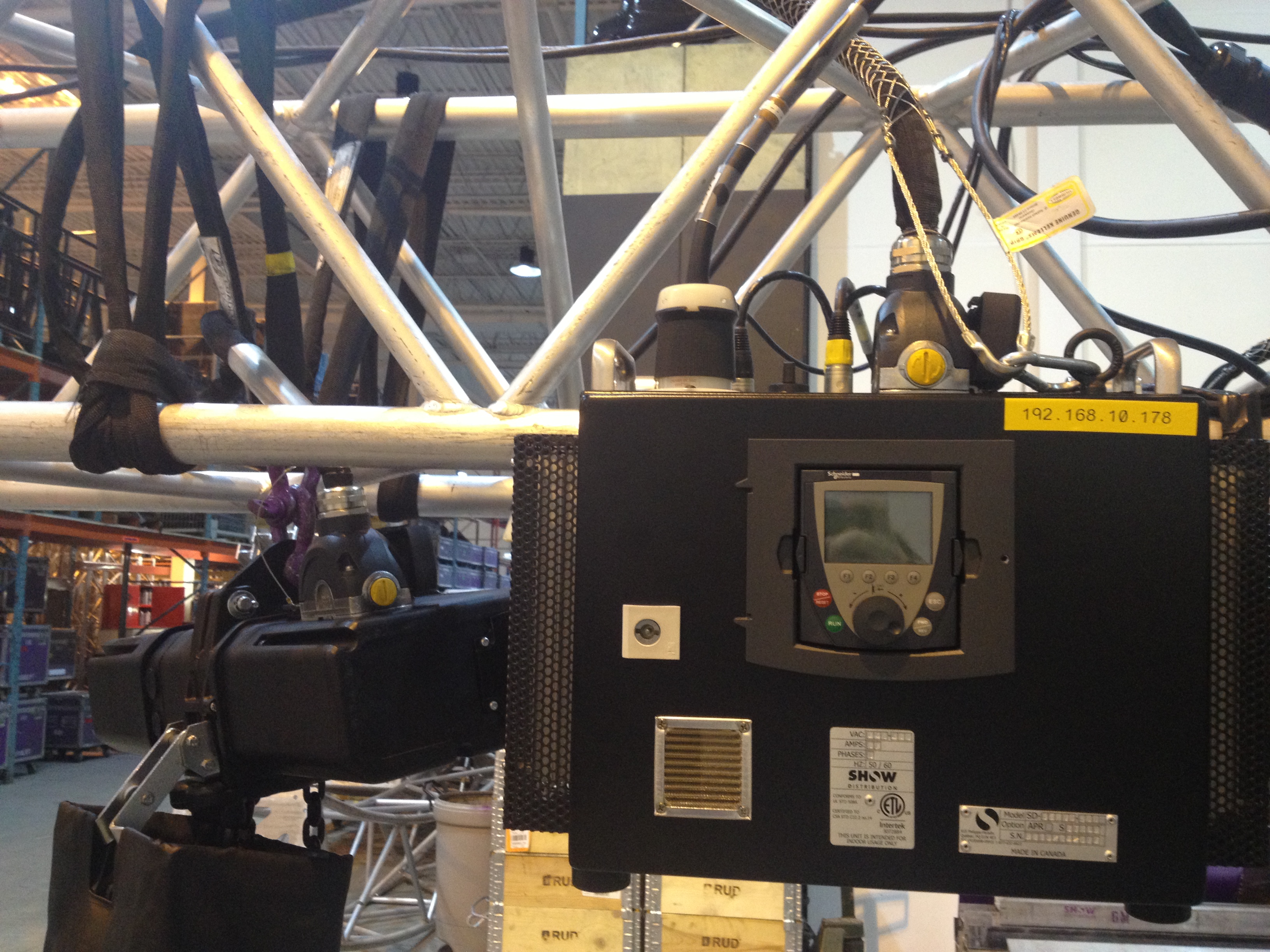The show must go on. Occasionally it doesn’t because of an act of nature or man, but Quebec City’s Show Distribution knows there is zero tolerance for equipment failures. So when it chose a modular connector to do the job of three single-purpose connectors on the controllers of a new high-speed servo hoist, it subjected it to a torture test reminiscent of John Cameron Swayze’s classic TV ads for Timex watches. (“It takes a licking and keeps on ticking!”)
Established in 1998, Show Distribution has built a successful business serving the growing niche for supplying major entertainment venues and touring companies with safe rigging equipment. The company sells and leases electric, fixed and variable speed chain hoists and other staging products. Its equipment has gone on tour with Metallica, U2, Taylor Swift and Cirque du Soleil and has been used in stage performances by Eminem, Celine Dion, AC/DC and many more performers and shows, even galas, operas and large night clubs. Chain hoists are used to switch out different sets and move lighting trusses, large video screens and other staging for these massive shows and their increasingly dramatic backdrops and pyrotechnics.

Show Distribution has built a solid reputation on being more nimble and responsive to customers than its larger, more conservative competitors, says Jean-Phillippe Robitaille, vice-president research and development. Its hoists have different lift capacities, covering a range from 125 to 25,000 kg. Some are fixed speed, others variable speed, some with servo motors. The company buys the chain and gear box from Germany’s LIFTKET, then designs and builds the hoists, usually with some client-specific customization built in. The hoists are designed for precise positioning, requiring the use of connectors to link decentralized controllers with high-performance motors.
Equipment used on tour is subject to plenty of rough handling. Before settling on the Han-Yellock 60 connector from another German company, HARTING, for the new high-speed hoist, Robitaille and his staff decided to see if it could take some real punishment. “We dropped it on the concrete floor from about four feet. We did it about 500 times. We dropped it from different angles. The frame got deformed a bit, sometimes an insert would unclip from the main module and had to be pushed back in, but that didn’t require any tools. After a while, we had to push a little bit harder to join the connector (halves), but what was important, It never became inoperable. It never lost signal or pin-to-pin integrity. That convinced us to go with it.”

While that ruggedness and the ability to route low and high voltages through one connector were the main factors for Show Distribution to choose the Han-Yellock® , the connector also has won several awards for innovations like its unique, tool-free push-button locking mechanism. The hood and housing are locked together securely by twisting the distinctive yellow locking button. Pressing the same button unlocks the coupling, separating the halves in seconds.
The Han-Yellock has been used on two tours and exceeded expectation, says Robitaille. He concedes some stage personnel are old school: risk-averse, reluctant to try such a new technology component. Still, he’s using Han-Yellock on 300 more of the high speed servo hoists on several projects installed worldwide. This servo-hoist claims the fastest lift speed on the market. The 500 kg load-model is rated at 144 feet per minute, the 1.6 tonne-load model at 72 feet per minute – which makes for extremely fast, dramatic set changes. “For us to use multiple connectors on the same product, it’s complicated and not efficient,” says Robitaille. Consolidating all electrical signals in one modular connector rather than using three single-purpose connectors simplifies the control box design and cabling, eliminates the risk of a misconnect in the field and reduces the likelihood of a connector failure that would render sideline the entire hoist.
Robitaille has configured the Han-Yellock in different ways, typically using three inserts. One configuration uses a 20-pin insert for all low-voltage encoders, a blank module to create maximum separation between low and high voltage, and then either two six-pin high voltage inserts or a six-pin for the DC break along with a big three-pin for the motor power. He’s receiving the connectors from HARTING as part of complete cable assemblies created at the latter’s manufacturing centre in Elgin, Illinois. One connector instead of three is more cost-effective, and making cable assemblies externally is less expensive than building them in-house, says Robitaille. He gets shop and control drawings, and the finished product matches the control drawings really well. “It’s very professional.”
Advertisement
Learn more about HARTING, Inc. of North America





